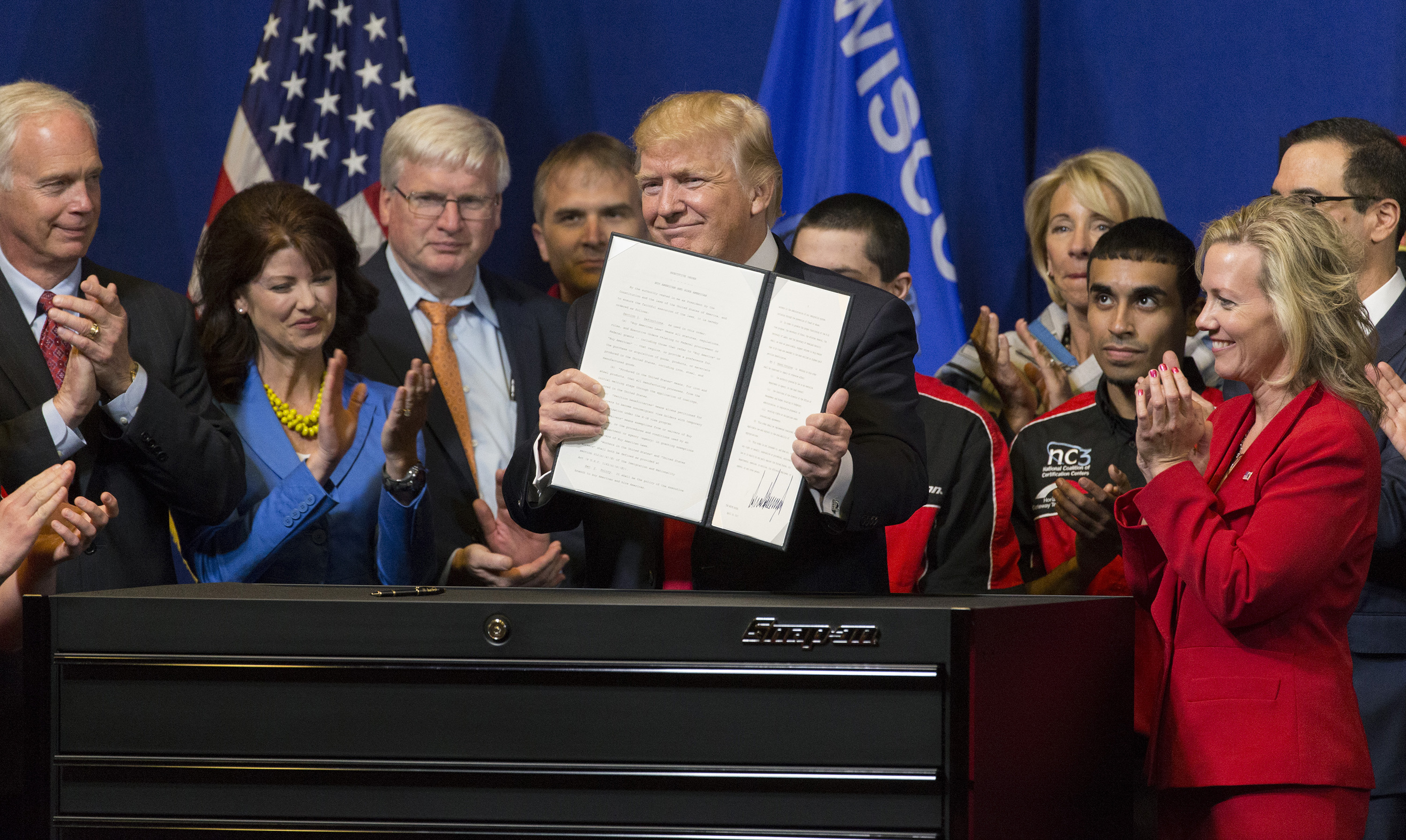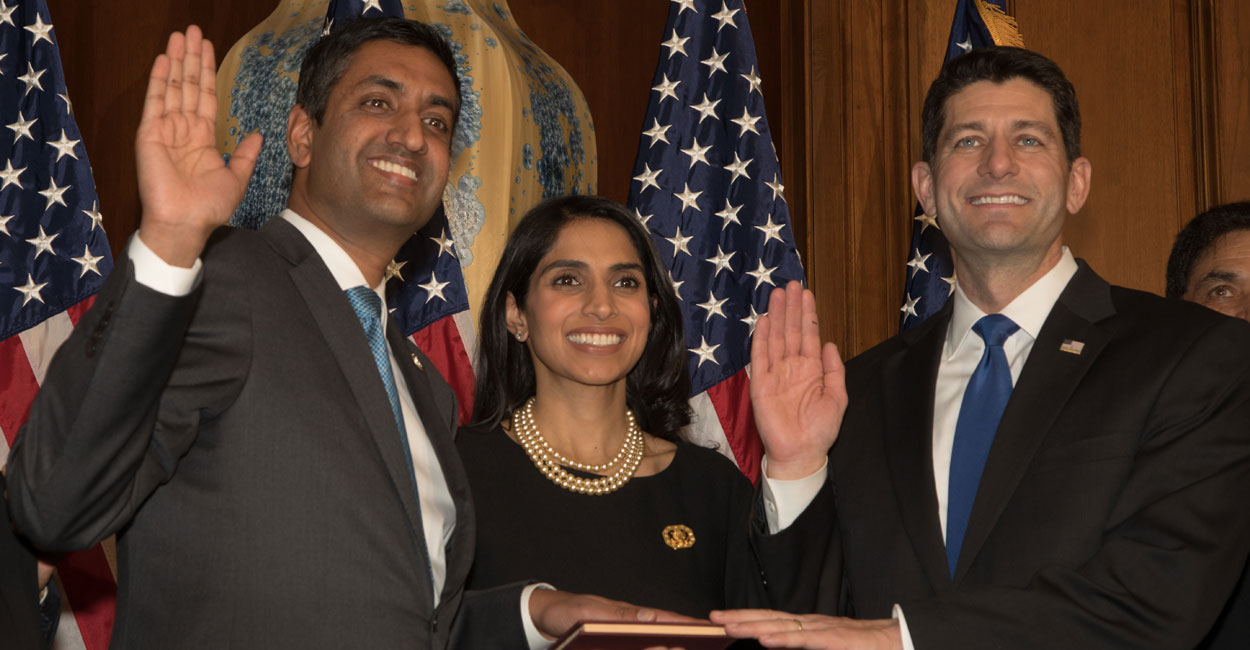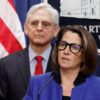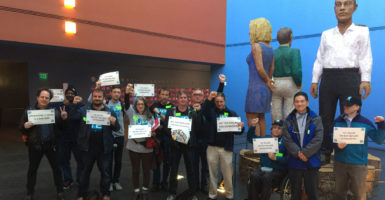After years in private business, Kurt Ho had finally found a rewarding information technology job, working for a public hospital in Northern California, ensuring vital systems—such as fetal health monitors—were functioning properly.
In October, Ho learned his job at the University of California, San Francisco Medical Center was being outsourced to a company in India, called HCL Technologies.
Ho was told he could stay on the job, get paid for four more months, and earn a bonus if he trained his replacement. Ho’s dream job lasted less than three years.
“I was very surprised because this is a hospital—we are not talking about something you can easily outsource,” Ho, 58, told The Daily Signal in an interview, just a few weeks after his last day of work, Feb. 28. “This is very important work. You are talking about patients’ lives here. So I absolutely want my replacement to do well for the patients and their families, for the doctors—who depend on the service. That’s what we wish for.”
Ho, along with about 80 of his IT co-workers, lost his job as a result of loopholes in a high-skilled visa program—known as H-1B—that allows U.S. companies to fire Americans and replace them with cheaper, temporary workers.
For Ho, that unfortunate designation is not the worst part. Ho is in the prime of his career—competent and able, he says. Facing his 12-year-old daughter is another matter.
“I am trying to get her to go into the STEM program at school, to pursue science and technology like I did,” said Ho, a U.S. citizen who immigrated here from Malaysia in 1989. “But she looks at me and says, ‘They shipped your job to India.’ I am setting a bad example for her. She is discouraged. She says she is thinking about dancing now.”
According to CBS’ “60 Minutes,” which recently profiled another University of California, San Francisco Medical Center employee who lost his job, outsourcing the IT work could save $30 million for taxpayers over the next five years. The state-run university has a $5.9 billion annual budget.
Becoming a ‘Cheap Labor Program’
Experts say most companies use H-1B visas properly—to employ highly-skilled foreign guest workers in sectors Americans cannot fully serve. But stories of abuse, such as Ho’s, have inspired a bipartisan coalition in Congress, and the president, to push for reform.
On Tuesday, President Donald Trump signed an executive order that he said would make it harder for technology companies to replace American workers with cheap foreign labor.
“Right now, widespread abuse in our immigration system is allowing American workers of all backgrounds to be replaced by workers brought in from other countries to fill the same job for sometimes less pay,” Trump said during an appearance in Kenosha, Wisconsin, where he announced the new order. “This will stop.”

President Donald Trump announces an executive order that directs federal agencies to suggest changes to the H-1B visa program, to ensure visas are awarded to the most skilled, best-paid immigrant workers. (Photo: Mark Hoffman/TNS/Newscom)
His executive order calls for an adjustment in how H-1B visas are distributed, but stops short of mandating specific policy changes. Trump directs government agencies to suggest changes “as soon as practicable” that would ensure the visas are awarded to “the most skilled and the highest-paid” applicants.
Currently, the H-1B program is capped at 85,000 visas distributed annually—with 65,000 general visas and 20,000 reserved for workers with a master’s degree or higher—but demand regularly exceeds supply. On Monday, U.S. Citizenship and Immigration Services announced it received 199,000 petitions this year for visas, which are distributed at random through a lottery. The visas last for three years, and can be renewed for three more years.
#H1B Annual Cap Reached in First Week for Fifth Consecutive Year https://t.co/AHFBLGy3TI #immigration
— American Immigration Council (@immcouncil) April 7, 2017
“The H-1B program is filling a need—there are critical skills we can get abroad that aren’t always available in the U.S.,” said David Kreutzer, a senior research fellow focused on labor and trade at The Heritage Foundation. “But we want the employers that have the greatest need for the rarest skill sets to be the ones to get these visas. The current lottery mechanism, where visas are allocated by random chance, does not do that.”
In another reform announced earlier this month, the Trump administration announced that U.S. Citizenship and Immigration Services will closely investigate employers with a high ratio of H-1B workers compared to American employees, and businesses that send visa holders to work off-site.
Experts interpret Trump’s measures against the H-1B program as explicitly targeting outsourcing companies that have come under the most scrutiny, and taken advantage of a loophole in the law that allows them to pay foreigners a minimum of $60,000.
Research compiled by Howard University associate professor Ron Hira shows that in 2014—the last year for which information is publicly available—all of the top 10 and 15 of the top 20 H-1B employers used the program principally to facilitate offshoring of jobs.
The top 13 outsourcing firms accounted for a third of all granted visas in 2014.
Indian outsourcing companies such as Infosys, Tata Consultancy Services, and Wipro receive most of the visas through the lottery system because they submit tens of thousands of applications to better their odds, Hira says.
“The intent of the program is a good one—to bring in the best and brightest to fill skills gaps, but the rules are so loosely written and loosely enforced that it’s basically gone off the rails, and it almost invites firms to come in and favor H-1B visa holders instead of the U.S. worker,” Hira, who studies the H-1B program, told The Daily Signal in an interview. “It’s highly profitable to replace a U.S. worker for a H-1B visa holder. It was never intended as a cheap labor program, but it’s become that.”
India’s leading technology trade group, the National Association of Software and Services Companies, says Indian companies are being unfairly targeted.
“We believe that the current campaign to discredit our sector is driven by persistent myths, such as the ideas that H-1B visa holders are ‘cheap labor’ and ‘train their replacements,’ neither of which is accurate,” the group said in a statement after Trump announced his executive order.
How H-1B Came to Be
The H-1B visa program came to life as part of an immigration reform package signed into law in 1990 by President George H.W. Bush. The law’s sponsors viewed it as a vehicle to attract top talent to America for “specialty occupations” such as science, technology, engineering, and math that face a shortage of capable U.S. workers.
Supporters of the program note that nearly every major high-tech company, including Apple, Google, and Facebook, rely on H-1B visas, and pay higher wages.
“Most companies use the H-1B very situationally,” said William Stock, president of the American Immigration Lawyers Association, in an interview with The Daily Signal. “They use it often because they don’t have another choice.”
“Limitations on H-1Bs will drive more workers overseas,” says @wstock215.
The law, as it was originally written, was supposed to protect American workers.
It requires employers to pay foreign workers the area’s prevailing wage for the position, and to demonstrate that hiring foreigners would not “adversely affect” the working conditions of current employees in similar jobs.
An amended version of the law, enacted in 1998, included stronger protections, ordering companies that rely heavily on H-1B workers (more than 15 percent of their workforce) to promise not to replace American employees.
Yet, the amended law included a loophole. It allows H-1B reliant companies to be exempted from the requirements about protecting American jobs if they pay the foreign workers at least $60,000 a year, or hire a foreign worker with a master’s degree.
“The wage floor is way too low—the average IT worker in the U.S. makes way more than $60,000 per year,” said Hal Salzman, a labor force expert at Rutgers University, in an interview with The Daily Signal. “One simple reform to the program would be to take these tech companies at their word that there is a strong demand for high-skilled, world-class talent. Everyone would agree that the wage level for those jobs is at least $100,000, so you make that the salary floor, and for all practical purposes, the problem is solved.”
Stock contends that many companies who use the H-1B program are already paying above market wages, and requiring them to spend more could cause them to offshore more work permanently.
“Businesses want to make sure the wage test doesn’t become so onerous that it’s unrealistic,” Stock said. “Limitations on H-1Bs will drive more workers overseas. Sure, there is abuse within the program. That happens. We live in a fallen world. We have always said robust enforcement of labor standards that are already in place is the solution to those abuses.”
‘The Program at Its Best’
Bipartisan pressure to reform the H-1B visa program remains.
Experts say that Trump’s executive order will have limited practical impact, unless Congress steps in.
For example, changes in the number of visas awarded annually would need congressional approval.
Multiple bills have been introduced in Congress that would fundamentally change how visas are distributed, and who benefits from foreign work.
Rep. Ro Khanna, D-Calif., an Indian-American who represents Silicon Valley, has a personal stake in fixing the H-1B program.
Khanna, a freshman lawmaker, is one of the sponsors of a bill, called the H-1B and L-1 Visa Reform Act, that would eliminate the lottery system that rewards visas and replaces it with a “preference system.”

Rep. Ro Khanna, D-Calif., receives the House oath of office from Speaker Paul Ryan, R-Wis., during a swearing-in ceremony earlier this year. (Photo: Jeff Malet Photography/Newscom)
Under the legislation, which is also sponsored by Rep. Dave Brat, R-Va., of the conservative House Freedom Caucus, foreign students educated in the U.S. would get priority for visas. It would give special preference to those holding advanced degrees who would be paid a high wage and have valuable skills.
In addition, the proposal would not allow companies with more than 50 employees to hire more H-1B workers if 50 percent of their employees are already on H-1B and L-1s—another type of specialized work visa. Sens. Chuck Grassley, R-Iowa, and Dick Durbin, D-Ill., have introduced an identical bill.
“Most Americans appreciate the contribution immigrants make to the workforce, they just don’t want the system gamed,” says @RepRoKhanna.
“My sense is most Americans appreciate the contribution immigrants make to the workforce, they just don’t want the system gamed,” Khanna told The Daily Signal in an interview. “But under the H-1B program today, the beneficiaries are corporate interests. A lot of the H-1B workers are facing exploitation. The empathy is as much for them as the American workers who are getting the raw deal. The program at its best is for truly exceptional people to innovate and not as a way of underpaying foreign workers.”
Ho, the American who lost his job to a contracted Indian worker, said he too does not blame the H-1B visa holder.
“I am an immigrant myself; I would be the last person to bash immigrants,” Ho said. “The person who replaced me is taking advantage of an opportunity a broken system provides him.”
Last week, Ho landed another job, working for Robert Half International, a California-based information technology company.
“I have the skills, so getting work wasn’t an issue for me,” Ho said. “This is about taking a stand, not just for myself, but for my daughters, for my family, and for all Americans.”





























